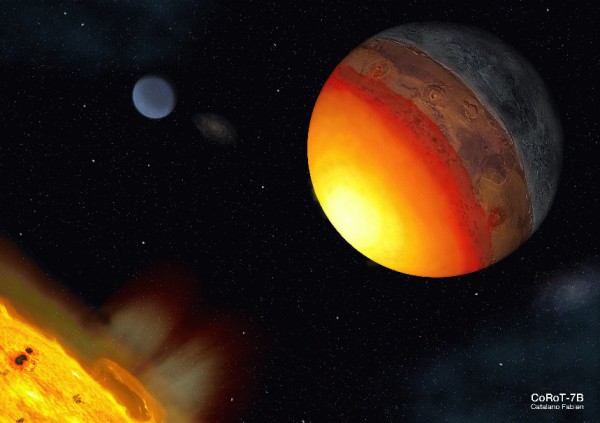|
|||||||||||
|
Research
My research comprises the characterisation of the low-mass planets: super-Earths and mini-Neptunes. The former are planets that are mostly solid, either rocky or icy in composition, while the latter posses also a volatile envelope. My goal is to determine if planets with masses between 1-15 Earth-masses are scaled up versions of Earth, or scaled-down versions of Neptune in terms of their composition, evolution and physical properties. To date, out of the ~600 discovered exoplanets, and 1000+ planet candidates reported by space mission Kepler, there are a handful of low-mass planets with measured masses and radii. This number will continue to increase as new data from Kepler arrives, and new discoveries are reported from other missions such as ground-based MEarth, or space mission CoRoT, as well as follow-up work to radial velocity planets. |
|
|
Composition of Super-Earths & mini-Neptunes A few prominent results are that CoRoT-7b and Kepler-10b are very similar planets with a rocky composition enriched in iron with respect to Earth. Their composition is very close to that of Mercury. On the other hand, 55Cnc-e is a volatile planet with a water-rich envelope of tens of percents by mass. |
M-R relationships for low-mass exoplanets |
|
Composition & Formation Current work comprises the study of atmospheric evaporation as a systematic process that may enrich the iron content of hot rocky planets, as well as the coupling of dynamics and chemistry to predict likely composition of refractory planets. |
CoRoT-7b artist impression
|
|
Interior Dynamics The aim is to understand the interior dynamics of these planets, establish the connections to the composition of their atmospheres, and trace the evolutionary pathways to habitability. |
Convection calculation for a 3 earth-mass planet (with STAGYY) -- Temp Structure |
|
And other projects ...
|
|
| Updated October 2011 |
||

